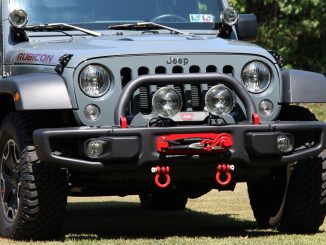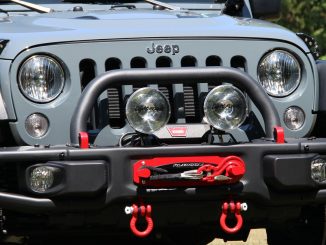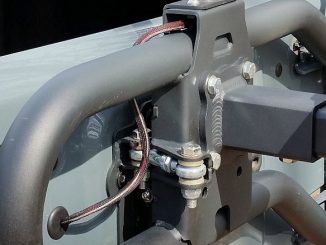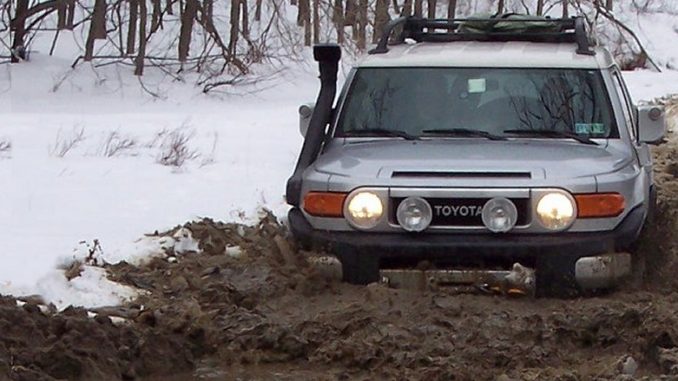
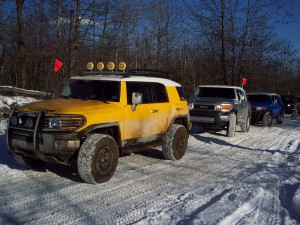
Ask 100 non-FJ owners what they think of the FJ Cruiser and you can bet there will be more “Love it” or “Hate it” than answers of indifference. Why? Probably because the FJ is so unique. But narrow your survey group down to FJ owners and previous FJ owners and you’ll get a different kind opinion, one of first hand experience.
That would be me, a previous owner and an avid offroad enthusiast. Right up to this past winter, I drove a 2010 FJ Cruiser for just over 4 years. I had plenty of time to become acquainted with my FJ, both on and off-road. What began as enthusiastic love affair for the FJ evolved into disappointments and dislikes for the vehicle. Within a year and a half of buying the FJ brand new off the lot, I began logging the mounting complaints that I had with the vehicle.
Now I know a lot of FJ owners absolutely love their FJ. I’m not writing this to bash Toyota or the FJ just because I have some kind of hatred towards the company or the vehicle. It’s actually quite the opposite. The FJ would be the second 4 wheel drive Toyota vehicle I’ve owned and both were very well built, reliable and durable vehicles. I wanted the FJ to live up to my expectation and the corporate hype and maybe I set the bar too high. But I’ll let you be the judge of that.
So let me tell you what I did not like in no particular order and why I ultimately sold it. If you disagree, I invite you to counterpoint anything I had an issue with.
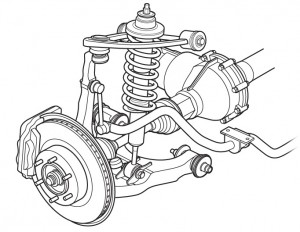
IFS limited articulation – Here’s the classic on-road and offroad arguments over Independent Front Suspension (IFS) vs. a Solid Front Axle. I’ve owned both and I can say first hand that when it comes to offroad, the straight axle suspensions offer greater strength and far greater articulation than Independent Front Suspensions. The problem as I see it is the geometry of the front suspension and steering is not lift friendly. Combine the IFS front end with a 4 link rear axle with LOTs of suspension travel and you have a recipe for articulation disaster, i.e. a roll over. A friend of mine rolled his FJ due to minimal suspension travel in the front end. All that engine weight up front over a limited traveling front suspension and it will get tipsy over very uneven terrain.
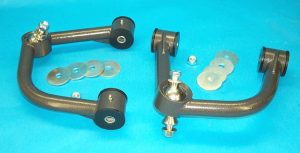
My on-the-road opinion of the IFS is that if you have any plans to lift the vehicle, expect handling challenges. I lifted my FJ a total of 2 inches and had serious handling issues as the castor reduced with the lifted control arms. I swapped the upper control arm adding more castor and it got a lot better. But for the remainder of the time I drove it’s handling on road was never good. It wandered and darted when I hit bumps in the road. If you know anything about bump-steer, lifted IFS is bump-steer times 2. Driving the FJ for anything longer than a short drive was downright fatiguing. I always had to be aware of the FJ changing directions and actually got good at predicting it.
The problem with Mixing Independent up front with a Solid Axle in the rear is the challenge to balance front to rear. Spring rate differs from front to rear affecting traction and stability. IFS can not be lifted through increased spring rate or spring height without creating a condition where any articulation such as a bump in the road changes the toe-in toe-out. This can cause wandering and steering vagueness.
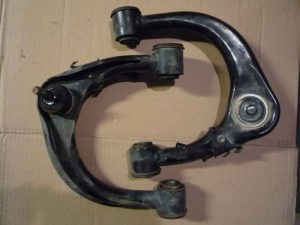
Weak Ball Joint in the Front Upper Control Arms – After 15k, the ball joints in my upper control arms (UCA) were shot. I didn’t even know they were so badly worn out until I replaced the Upper Control Arms with aftermarket UCA’s that corrected the castor that was knocked out of spec due to the 2 inch lift. The ball joints were so badly worn out that there was considerable play in the shaft of the upper ball joint, and easily wobbled with my fingers. I had been running 33″ tires that measured 32.5 inch when new for about a year and a half. That’s about 1/2 inch taller than the stock tires it came with. 15 thousand miles on the FJ and the upper ball joints are dangerously shot.
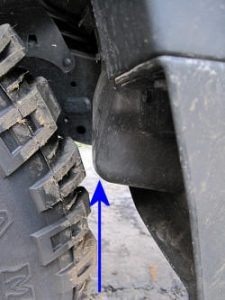
Body Mount Sticks Out into the Wheel Well – Anyone who has or had an FJ and wanted to put taller tires on it, probably ran into the body mount issue. Put simply, Toyota designed the FJ frame with a body mount that protruded into the front wheel well by several inches. If you want to put tires that are only one inch taller and slightly wider than stock on the FJ, there is a good chance your new tires will rub the body mount. There are many writeups online explaining how to do the Body Mount Chop. After the 2″ lift I installed 33×12.5 x17 Mickey Thompson Baja MTZ Mud Terrain Tires and Pro Comp Series 7028 Wheels for adequate backspacing. My tires rubbed the body mount when I was turning and hitting a small bump. Like pulling off the street into a parking lot. This in turn triggered traction control to kick in and beep and do something with the brakes. My stock tires were one inch shorter and a little narrower. Seriously, didn’t Toyota expect people to put taller tires on the FJ Cruiser? Then why did they put this body mount in the wheel well? It didn’t have to be designed that way. I don’ t know. I chopped 3 months into ownership.
Delayed Throttle Response – It’s pretty well known that just about everything in vehicles built these days is computer controlled. So it’s no surprise that the gas pedal in the FJ doesn’t directly control the throttle but rather sends a throttle position signal to the computer. That’s fine. All newer vehicles do that. But when I step on the gas, I expect it to go. Not think about it, then go. There is a noticeable delay between stepping on the gas and computer supplying gas to the engine. So much so that I have been sitting at an intersection ready to make a left turn in front of traffic, I press down hard on the gas pedal to cut left at a break in oncoming traffic, realize it’s too late to go, let OFF the gas… and the vehicle never moved. I’d say the delay is between a half second and three quarters of a second. That’s a long time when you want it to GO! I hated it. It’s so apparent that someone made a module that plugs into the gas pedal harness and modified the signal, or compresses it, to get the FJ to start moving sooner. Whatever, I had to get used to it.
Poor Throttle Control – As if the delayed throttle response wasn’t enough, the computer controls the amount of gas being supplied to the engine, not based on throttle position, but all kinds of other unknown things. People get used to gas pedal positions to determine how much power the engine will put out. All my other vehicles have always been predictable. Not the FJ! No, the FJ think it knows how much power I need regardless of what I want. The same throttle position did not produce the same amount of power from one time to next. So I end up pressing the pedal down further and further as the FJ lets up on the gas though my foot hasn’t moved! By that time it’s already shifted into a higher gear and now the engine is bogging down. Extremely annoying. I’d have to drive it aggressively and shift my automatic manually to feel like I had any control over the thing. Simply put the throttle was unpredictable. I never got used to throttle response in 4 years. I must say I did like the engine itself. It had plenty of horsepower at higher RPMs but unfortunately I couldn’t enjoy it thanks to the computer control.
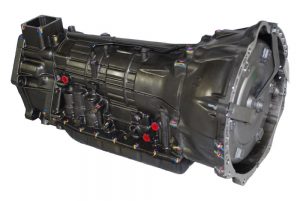
Shifts into Higher Gears Too Soon – This may have been a byproduct of the poor throttle response and control but the transmission seemed to want to shift into a higher gear way too soon. The RPM’s would drop and the engine would bog down. When I knew it was coming I may get harder on the gas to prevent it from up shifting. But then when it would go into a higher gear anyway. Then to make it worse it would start to reduce the throttle on its own in the higher gear. I’d have to press the gas pedal down further to keep accelerating. But by that time it had already shifted into a higher gear. To force it to down-shift by increased throttle alone would require a lot of pedal movement, which then resulted in excessive throttle and WAY too much acceleration. Something I’d even redline the RPMs without intending to do so! At times the transmission would even up shift when I was applying throttle which definitely felt wrong. At that moment it should have either held the current gear if the RPM was not too high or it should downshift if the RPM was too low. Again, I’d have to apply too much throttle to get it to downshift. Which leads to the next complaint…
Did Not Downshift When a Lower Gear was Obviously Needed – Who designed this power band and and shift points? So I’m going up a hill. The RPMs are coming down, I’m loosing speed. I give it a little more gas. I’m still loosing speed. What I need is a lower gear. Computer doesn’t think so. If I apply what seems like too much gas, then it will finally downshift. But it’s working too hard to get it to downshift. So instead of suffering, I got pretty good at manually downshifting and up-shifting my automatic manually. The way the automatic was shifting seemed to me to be hard on the engine and transmission. It was not working with the power band of the engine and it certainly didn’t do what I’d want it to do.
Engine Braking – Engine braking is nice to control speed. Let off the gas and the vehicle slows down. But the FJ seemed to engine brake too much. Knowing gas mileage was not great, sometimes I would want to feather the throttle just enough to keep moving. I always felt that I had to apply too much throttle so the engine wouldn’t be slowing down my momentum at highway speeds. I think this played right into the reduced fuel economy.
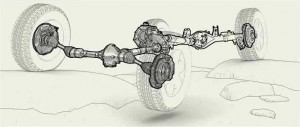 Overactive TRAction Control (TRAC) system KILLS Forward Movement – I can understand the concept of limiting the throttle to control a wildly spinning rear wheel. But I am clueless as to why the FJ would limit the throttle so much that I can’t even dig down to some traction with that spinning tire and the vehicle seems nearly disabled! Here is a perfect example of this over-active TRAC system. Ironically, it was January and I’m making the final drive to a dealership to trade the FJ in. I’m at a left turn light. Ever so slight up hill. Left tires are on snow and slush in the left gutter. Right tires are on dry pavement. Light turns green and I hit the throttle. Left rear tire starts to spin and immediately the computer kills the throttle. To a painful crawl. I’m barely moving and I’m swearing at the damn thing to GO! I start looking down to find the damn button to disable the TRAC but I got to watch the driver in the Honda Accord behind me who is looking to the right as he considers passing on the right to go around me. I creep through about 10 feet of snow until I hit blacktop with that wheel and finally go. By that time the short cycled light was turning yellow. As I passed the police officer at the intersection on my left, I could swear he was shaking his head like he was thinking “You LOOK offroad capable with the mud tires and steel front winch equipped bumper, but WTF was that??”. Now think about that same computer controlled throttle offroad. Yeah, not good at all. I know A-Trac is disabled in 4-low but my throttle was still limited for some reason. Especially in the snow and mud. More than several times while offroad I really thought there was something seriously wrong with the FJ.
Overactive TRAction Control (TRAC) system KILLS Forward Movement – I can understand the concept of limiting the throttle to control a wildly spinning rear wheel. But I am clueless as to why the FJ would limit the throttle so much that I can’t even dig down to some traction with that spinning tire and the vehicle seems nearly disabled! Here is a perfect example of this over-active TRAC system. Ironically, it was January and I’m making the final drive to a dealership to trade the FJ in. I’m at a left turn light. Ever so slight up hill. Left tires are on snow and slush in the left gutter. Right tires are on dry pavement. Light turns green and I hit the throttle. Left rear tire starts to spin and immediately the computer kills the throttle. To a painful crawl. I’m barely moving and I’m swearing at the damn thing to GO! I start looking down to find the damn button to disable the TRAC but I got to watch the driver in the Honda Accord behind me who is looking to the right as he considers passing on the right to go around me. I creep through about 10 feet of snow until I hit blacktop with that wheel and finally go. By that time the short cycled light was turning yellow. As I passed the police officer at the intersection on my left, I could swear he was shaking his head like he was thinking “You LOOK offroad capable with the mud tires and steel front winch equipped bumper, but WTF was that??”. Now think about that same computer controlled throttle offroad. Yeah, not good at all. I know A-Trac is disabled in 4-low but my throttle was still limited for some reason. Especially in the snow and mud. More than several times while offroad I really thought there was something seriously wrong with the FJ.
Poor Performance, Did I have a lemon? – I sold the FJ with about 24,000 miles on it. It was one year past the 3 year power train warranty. At 24k miles most of the time it felt like it was performing poorly. At high RPM it felt strong and fast. At lower RPM power was weak. Gas mileage was horrible. If I got 13 MPG, I was doing well that day. Most of the time I was getting about 12.5 MPG or less. If I rode with the rear window open, which i did once on a nice day on the back roads, I smelled a horrible rotten egg smell when I applied moderate throttle. I had a ScanGauge II hooked up, which I bought when the FJ was very new to monitor gas mileage knowing it was not good on gas for some reason. The ScanGauge II also monitors error codes, which there was none.
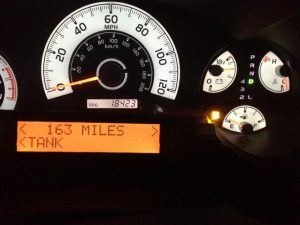
Poor Range – On top of the poor fuel economy, it had a 19 gallon tank. Do the math. at 12.5 MPG (or less) and a 19 gallon tank, I’d be running out of gas at 237 miles. The light comes on when there is about 2-3 gallons of fuel left in the tank. Two gallons at 12.5 MPG means I better find fuel within 25 miles. On the turnpike or in the PA mountains, that could be at little as 20 miles. More than once I felt that panic that I might not make it to the gas station unless it’s at the bottom of this mountain. I considered about a 220 miles the range per tank. That’s really pathetic. When I towed my 1978 Jeep CJ across the state with my Ford F-150, I got about that in MPG.
Over-Active Panic Braking – The FJ has something called Panic Braking. Panic Braking is apparently amplified braking of the wheels in what is detected as emergency stopping. On many occasions this panic braking kicked in at bad times. Like when I was coming up to a stop light where the road is worn out and buckled from all the heavy traffic at the light. Over these little bumps the FJ somehow thought I was in an emergency braking situation and applied a ridiculous amount of braking when I was barely hitting the brakes. This resulted in me seemingly SLAMMING on the brakes at the light, which I’m sure cars behind me really appreciated. So I let off the brakes to try to end the harsh braking. But I’m coming up to a light so I have to brake. Tap them again and it’s STILL ACTIVE! I’m slamming the brakes again! Panic braking won’t let up once it kicks in until you come to a complete stop. Let me tell you it’s a freaky feeling when lightly pressing the brake pedal SLAMS ON the brakes. I would most definitely rather not have panic braking at all than deal with that.
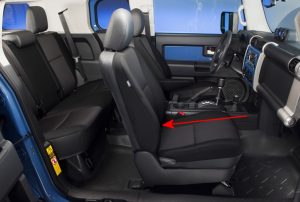
Poor Comfort – Toyota could have done much better with the comfort of the seats. Comfort of the front seats was terrible especially on longer drives. Flat, non-ergonomic, and no lumbar support. Worst of all there is some kind of metal lever under the foam right at the tailbone that mechanically causes the headrest to raise when pressed in. What?? WHY??? I wanted to know what that metal square plate was at my lower back. When I folded the front seat forward, pulled out the cross-pin that stitched up the lower cloth of the seat, and looked under with a flashlight I could believe it when I saw it. What’s that all about? Safety feature for rear impacts? Well it hurts my lower back. With the seat opened up, I add more padding to both my seat and the lower back area. It helped a little but not much. The rear seats were not much better.
Awkward to climb into – Speaking of comfort, I never could figure out how to get in comfortably. I ended up using my elbow on the seat in an awkward way to lift myself and slide in. The handle on the front pillar wasn’t in a good spot to leverage myself in. Not sure what to suggest in that department.
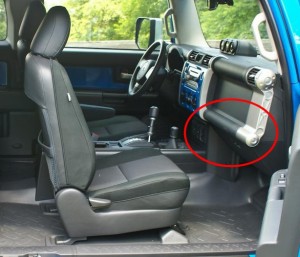
Nice Big Rib for Passenger to Bang their Knees – I saw this immediately when I was looking at FJ’s considering a purchase. On the passenger side in front of the passengers knees, there is a big, decorative rib running across the dash panel. It serves absolutely no purpose other than looks. But to a 5′ 9″ passenger, it’s hitting the knees unless you put the rear seat way back and hope the person in the back doesn’t complain too much. I never understood the reason for that bulging rib. If you look at any other vehicle, the passenger compartment leg area slopes away from your knees and legs to give you leg room. Imagine getting onto an accident and smashing your knees against that big bulging rib. Perhaps the Toyota engineers are considerably shorter than their average American customer.
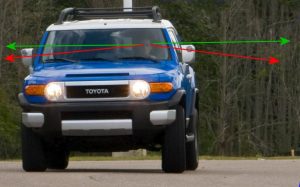
Horrible Visibility – Where to begin. How about backing up. Good thing they added a rear facing camera to the rear view mirror or I wouldn’t be able to back up without a spotter… even in a parking lot. Looking forward, the side view mirrors are HUGE and I can’t see over them! This creates a BIG blind spot especially considering the width of the roof pillars. How did I deal with that? I used spacers under the front seat and longer bolts to jack up the front of the seat and raise my visibility so I could just see over them. Passengers in the rear seat have to deal with tunnel vision thanks to little, non-functional, tinted windows in the half doors. My kids often complained that they felt sick in the FJ because they couldn’t see anything. No way to deal with that other than stashing barf bags in the back just in case.
Horrible air flow in the vehicle – When the windows are down I get erratically slammed in the side of the head with wind. Forget windows down at highway speeds. That’s a recipe for left ear damage. This happens when one or both windows are down. The only way to deal with it is to only put them down a little. So most of the time I rode around with the windows up. With all vehicles I’ve ever owned the way to deal with bad air flow in the front window was to lower the back window a little. Oh, but the rear half door windows in the FJ don’t go down. That would have been a nice touch.
Power Inverter Way in the Back – Who’s genius idea was it to put the power inverter plug way in the back?? When will I need 110 voltage? Probably to charge my electronic devices on a long trip like my phone or to run the kids DVD player. But 110v is way in the back under my cargo. In fact when I built my rear cargo tool box, I had to make an access door through it to get to the 110v outlet. Well, that’s what household extension cords are for, running 110v power over my cargo, past the kids and up to the front where I need it.
No stock center console storage – What SUV or 4×4 doesn’t come with a center console? Good thing the aftermarket came through on that one.
Lack of aftermarket forethought – Any company that has even the smallest understanding of the offroad community should know that people are going to modify the vehicle. They’re going to lift it, put taller tires on it, aftermarket bumpers, auxiliary lighting, you name it. Just open up any off-road catalog and you’ll see enough tempting goodies to spend a year’s salary on. I think Toyota really dropped the ball when it came to forethought about what the FJ Cruiser could have been. Way back in 2006, the FJ was being billed as the resurrection of the FJ40 of the 1970’s, which really was an awesome offroad vehicle. Aside from the explosive Birfield Joints in the front axles, the FJ40 was some serious competition to the Jeep of that era. Today, the only similarity the FJ Cruiser has to the FJ-40 is the look of the grill and the white roof. Other than that, it’s basically an SUV on a Tacoma chassis. If Toyota seriously wanted to compete in the offroad enthusiast market they should have done their research, returned to the roots of the FJ-40 and made an FJ Cruiser that had the potential to compete with the Jeep JK.
Offroad Limitations – These are some other general limitations offroad that I wasn’t happy about.
- No factory front locker option. That would have been nice.
- Wide front fenders. The original FJ-40 had fenders much like the Jeep. More than once I was in a tight spot and either narrowly avoided fender damage or sustained fender damage. I understand they need the room to put all of the components in the engine bay.
- No ability to unlock front swaybar. No factory option and I couldn’t think of a way to do it easily. The suspension sure could have used a disconnect.
- Bump when letting off the brakes. Did you ever feel that? What is that? The suspension unbinding? Ok hat has nothing to do with offroad but still weird.
- Can’t install tires 1″ taller and a little wider without a tall lift and cutting the body mount. That alone tells me that Toyota did not think about the offroad market who would most definitely want to do that.
Where did Toyota go wrong?
When Toyota unveiled the FJ Cruiser, it was introduced as a concept car at the January 2003 North American International Auto Show it was met with very positive consumer feedback. The FJ Cruiser was billed as a rugged 4×4 with capabilities reminiscent of the FJ40. Excitement grew as offroad enthusiasts and Toyota fans saw a contender to the popular Jeep Wrangler. What better contender to the Wrangler than the FJ40 of the 1960’s and 1970’s? Sadly, the FJ Cruiser was nothing like the FJ-40 aside from the grill appearance and the white roof.
Sales of the FJ started off strong in 2006 with over 56,000 FJ Cruisers sold but as initial enthusiasm waned, sales dropped off considerably by 2010 with less than 15,000 FJ Cruisers sold. In 2013, Toyota announced that the FJ Cruiser’s last year would be 2014.
My opinion is that if Toyota would have brought back the FJ-40 with a solid front axle and body stylings along with all the modern amenities that Toyota is capable of producing in a 4×4 vehicle, this would be a different story all together.

